Ways and means of detecting enemy artillery positions
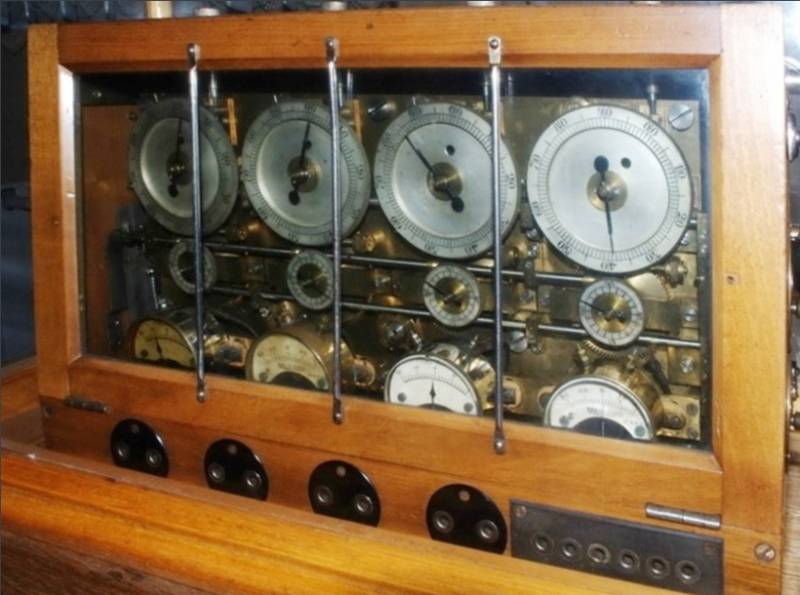
Chronoscope from N.A. Benoit. Photo VIMAIViVS
As long as artillery is present on the battlefield, counter-battery combat remains relevant. Timely detection and suppression of an enemy firing position allows you to reduce the possible damage to your troops, as well as weaken the enemy troops. Enemy positions can be identified using various means and methods, some of which have long been known, while others are only now becoming widespread.
Historical experience
In major conflicts of the past, various reconnaissance means were used to detect enemy artillery. So, a reconnaissance group and / or an embedded agent could work behind enemy lines. With the right organization, such reconnaissance provided the necessary accuracy of data and the speed of their transmission.
Without crossing the front line, it was possible to use an extremely simple, but not very accurate method of marking positions by flash and sound. Using binoculars or other optics, the observer had to notice the moment of the flash or the appearance of a cloud of dust from the shooting, and also measure the time until the sound of the shot appeared. Simple calculations made it possible to determine the direction to the enemy's guns and the approximate distance to them.
During the First World War, reconnaissance from the air was used for the first time. At first, tethered balloons were used for it, on which there were observers with optical instruments. Being at a considerable height, the observer could follow the terrain at a great distance. At the same time, there were known risks, as well as difficulties with organizing the transfer of target designation.
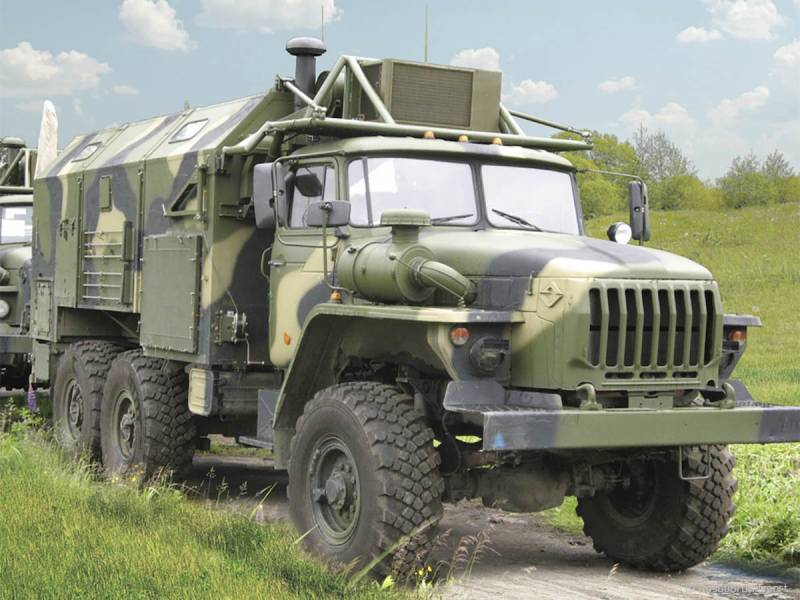
Modern sound measuring complex AZK-7M. Photo "Rosoboronexport"
Then, for reconnaissance, they began to use aircraft, both any and specialized ones. As the aviation technology and the introduction of radio communications, this method became more and more effective. During the Second World War, some countries even developed specialized reconnaissance spotters capable of participating, incl. in counter-battery combat.
Sound intelligence
Marking positions by the sound of a shot turned out to be a convenient and effective method, which is why it has been developed. Various projects of tools of this kind were aimed at improving the accuracy of detection, as well as at reducing the negative impact of the "human factor".
So, even before the start of the First World War, a curious intelligence system was proposed by the staff captain of the Russian army N.A. Benoit. He proposed to place several electrical devices with sound-catching membranes on the battlefield, and to deploy an automated time counter, the so-called. chronoscope. The membranes, spaced apart on the ground, were supposed to capture the sound of a shot, and the chronoscope recorded the time it took for the sound to travel. By this time it was possible to determine the approximate location of the guns.
Another version of sound-measuring reconnaissance received the designation "VZh" ("Volodkevich, Zheltkov") and was used to a limited extent during the war. This system was serviced by a crew of several people. Three observers at positions with known coordinates were supposed to "receive" the sound of a shot and give a signal to the control point. The necessary calculations were made there, and their data was sent to their artillery.
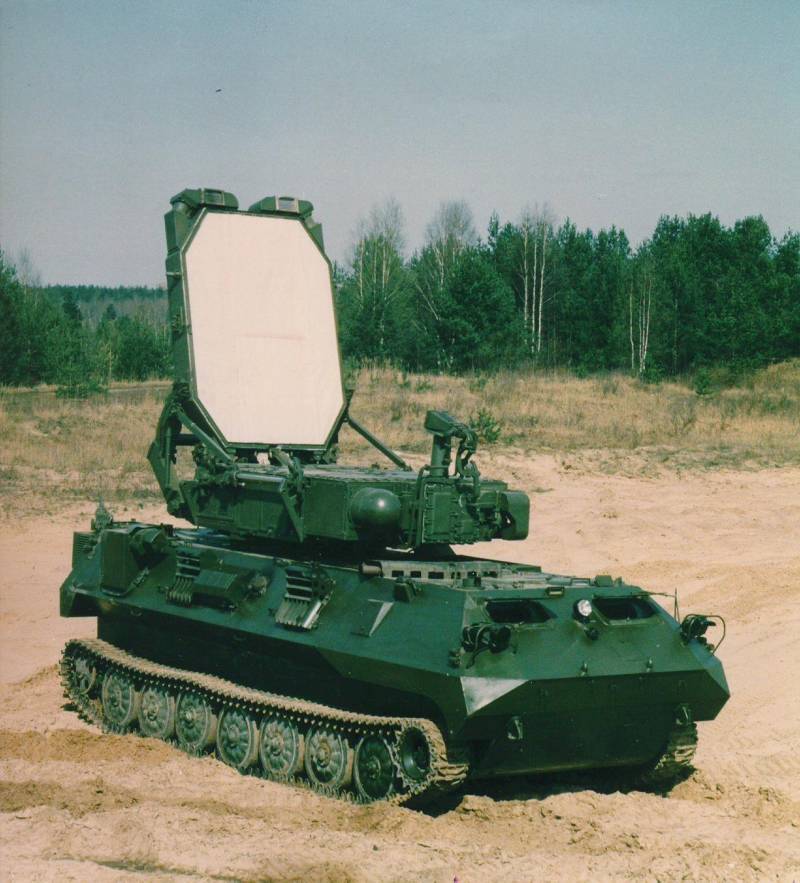
Product 1L219 "Zoo"
The idea of sound-measuring reconnaissance has spread, as a result of which a host of other devices and instruments have appeared. In addition, as technology developed, modern components were actively introduced - microphones and computers. The range, accuracy and speed of detection of firing positions was constantly growing.
Sound measuring systems are still in service today - such as the Soviet / Russian AZK-7 (M) "Mesotron". These products are built using modern sensors and high performance computers. The result is maximum speed and accuracy.
radar method
The development and wide distribution of radar at one time did not bypass artillery. In the sixties and seventies, specialized radars appeared and entered service, capable of detecting and accompanying artillery shells, as well as making the necessary calculations.
The principle of operation of the counter-battery radar is quite simple. After deploying to the position, the station monitors the sector and looks for air targets with characteristic features. Projectiles, mines and missiles are characterized by a low EPR, fly along a ballistic trajectory and have a speed within the specified limits. The radar takes such targets for tracking and uses known points to calculate the entire trajectory, incl. determines the starting point. Then this information is converted into coordinates for target designation.
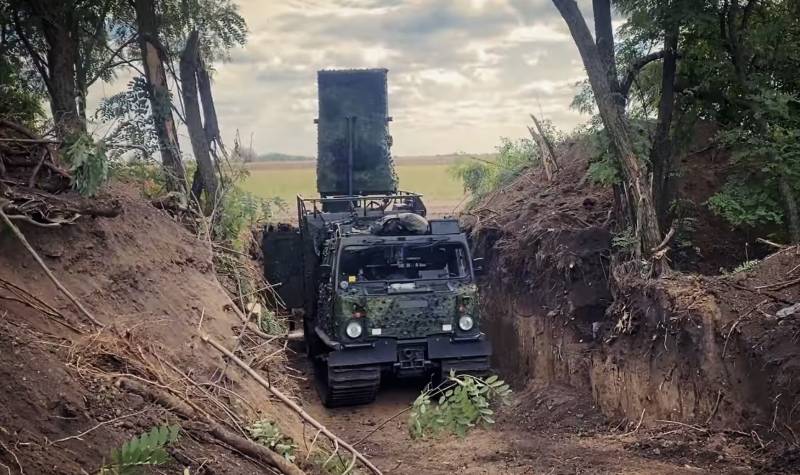
Swedish ARTHUR radar, handed over to Ukrainian formations. Photo by the Ministry of Defense of Ukraine
The counter-battery radar can also operate in the fire adjustment mode. In this case, the trajectories and points of impact of the outgoing projectiles are calculated. Also, modern stations are able to determine the bursts of shells and their coordinates. These data are corrected.
Radar stations have obvious advantages, which has led to their rapid and widespread adoption. So, now the Russian army is armed with self-propelled radars 1L219M "Zoo", a portable reconnaissance system 1L271 "Aistenok", etc. Similar tools in different versions are available and used abroad.
old and new principles
Over the past few years, the Russian army has been receiving the latest 1B75 Penicillin artillery / counter-battery reconnaissance systems. In their work, they use both new and well-known, but rethought principles. At the same time, high accuracy of detection and calculation is achieved, comparable with reconnaissance means of other classes.
The composition of the self-propelled "Penicillin" includes an optoelectronic station with an infrared channel on a lifting mast and a set of seismic sensors. During operation, the mast raises the optics to a considerable height, and the sensors are installed on the ground around the complex. The thermal imager monitors the sector and captures flashes of enemy shots. In this case, seismic sensors receive ground vibrations. Based on the direction to the source of the outbreak, as well as the difference in the time of passage of the waves, the exact position of the enemy guns is calculated. In addition, like stations of other classes, the 1B75 product is able to track the explosions of its artillery shells and adjust the fire.
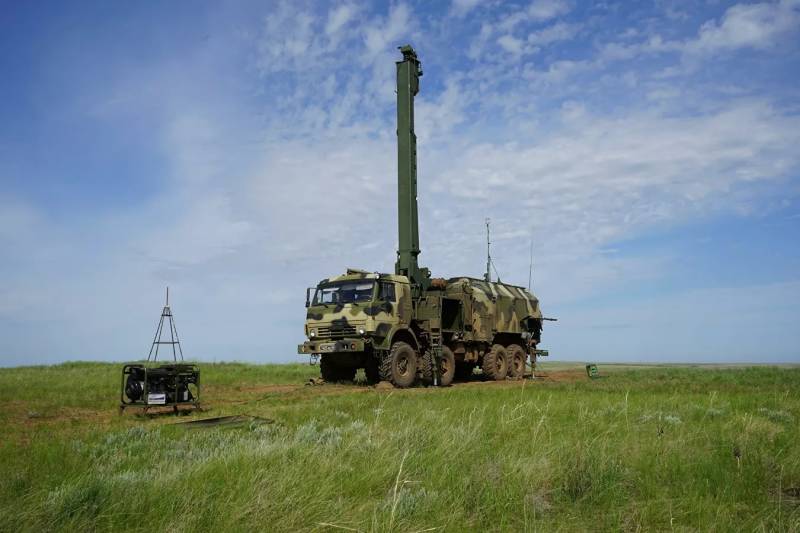
Complex "Penicillin" in working position. Photo Concern "Vega"
In terms of performance and capabilities, "Penicillin" practically does not differ from a radar of a similar purpose. At the same time, such a complex operates only in a passive mode and does not unmask itself with radiation. It will be much more difficult for the enemy to detect a working 1B75 and prevent the detection of their own positions.
Today and tomorrow
Thus, a number of methods are known for detecting enemy artillery positions for retaliatory strikes. In addition, a large number of specialized tools of various kinds have been developed to solve such problems. All known methods and specific products have been repeatedly used in different conditions and have demonstrated their potential.
The current generation of domestic counter-battery weapons is being tested right now as part of the current Special Operation. Enemy artillery constantly suffers losses, which indicates, incl. on the effectiveness of radar or sound-thermal means. It is obvious that the effective use of existing complexes and stations will continue with the desired effect.
It should be noted that right now other means of artillery / counter-battery reconnaissance are being tested and used. Thus, unmanned aerial vehicles of various types, from light quadrocopters to full-size aircraft, have recently acquired great importance. In addition, loitering ammunition appeared, which can not only find enemy artillery, but also destroy it on their own.
Obviously, the experience of the current hostilities will affect the processes, methods and means of artillery reconnaissance and detection of foreign positions. Exactly how, time will tell. But in general, it is already clear that specialized counter-battery weapons optimized for solving such problems will not disappear anywhere, and they will be supplemented by other systems and products.
Information